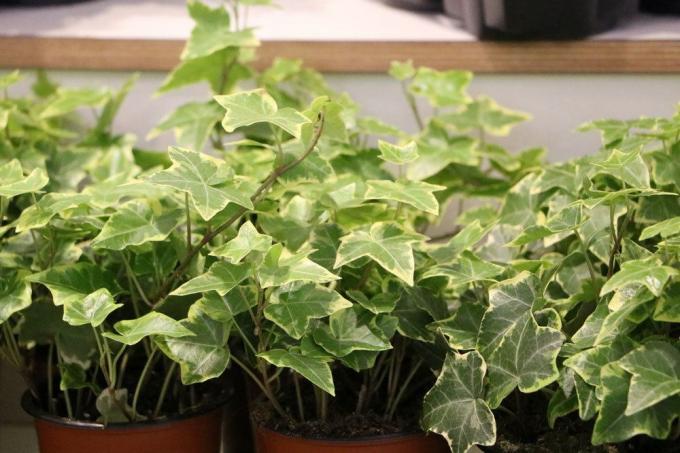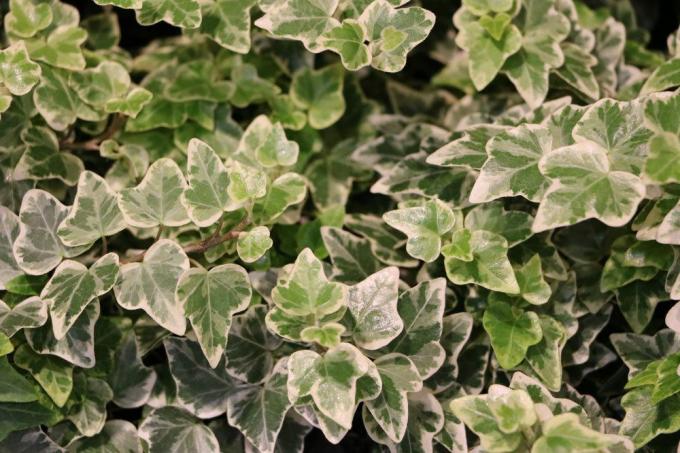
table of contents
- Multiply
- Propagation with cuttings
- care
- Cultivation
- Propagation by seeds
- sowing
- care
The ivy is a popular garden and houseplant. Since ivy plants are very easy to care for, they can be cultivated under almost all conditions. A room ivy also makes a good hanging plant, or you can just let it climb upwards. Propagating the climbing plant is just as easy as caring for it. So you can take your first ivy with you from a room with friends or acquaintances as an offshoot.
Multiply
Ivy plants are robust and extremely easy to care for. That is why the propagation of the vigorous plants is easy and uncomplicated.
There are three ways to propagate the ivy:
- Cuttings
- Sinker
- Seeds
Since a long tendril, which is still connected to the mother plant, is placed in the ground when propagating with sinker, this method cannot be used with indoor ivy.

Propagation with cuttings
The propagation of cuttings takes place by offshoots from the mother plant. The best time to pull cuttings is between April and September. It is best to cut the cutting from an annual tendril. This should only be slightly lignified and not yet have any adherent roots. These partial cuttings are the middle parts of the tendrils. Alternatively, you can also use a head cutting, i.e. the end of a tendril with shoot tips, for propagation. Where on the ivy you take the cutting is up to you.
The cutting should:
- have a length of 10 to 15 centimeters
- be freed from the lower leaves
- have two to four leaves at the top
You have two options for rooting the cuttings:
- Vessel with water (water glass)
- Pot with potting soil
If you cut the cuttings out of the middle parts of a tendril, the upper and / or lower end of this so-called. Mark partial cuttings as they have to be placed "the right way round" in the glass or in the pot. That always means the lower end of the cutting into the water or comes into the earth. If it is used “the wrong way round”, it will not develop any roots.
For propagation with potting soil, proceed as follows:
- Put cuttings in pots with potting soil
- alternatively well-drained substrate mixed with sand
- Pre-drill small holes
- Planting depth: 3 to 4 centimeters
- it is best to carefully pour water at room temperature

Then put a clear plastic bag over the cutting and the pot. Make sure that the plastic bag on the bottom of the pot is well closed. This keeps the substrate evenly moist. You shouldn't forget to ventilate the young plants once a day to prevent mold growth. At the same time, you can check whether you need water, because the substrate should be kept slightly moist.
Tip: So that the plastic bag or If the freezer bag does not come into contact with the young room ivy, insert two wooden sticks into the pot. They ensure the necessary distance to the ivy.
The young plants take root best when they get a partially shaded place at a temperature of 20 to 22 degrees Celsius. Under no circumstances should they be in direct sunlight.
When propagating in a glass of water, proceed as follows:
- Place the cutting in a glass with tap water
- it is best to use a green or brown glass
- Wrap transparent glasses with aluminum foil
- Use a jar with a large opening
Roots should not be damaged when pulled out later.
As with propagation with potting soil, the delicate plants must not be in direct sunlight. A temperature between 20 and 22 degrees Celsius is also ideal here.
Tip: Propagating in a water glass is also perfect for plants that are kept as hydroponics.
care
Once the first new shoots have developed, the plastic cover can be removed permanently. For watering, it is best to use lukewarm water for the entire period. As soon as the substrate is well rooted, the young room ivy can be placed in a larger pot. This happens after four to eight weeks. From this point on it is cared for like a "big" ivy.

Tip: The cutting must not be fertilized.
If the partial or head cuttings are in a glass with water, the water level should always be consistently high. Therefore, you should add water every now and then. It should be completely replaced when it becomes cloudy. After one to two weeks, roots should have formed. If these are about two centimeters long, the cuttings can be potted in soil or cultivated as hydroponics.
Cultivation
Potting soil vs. Water glass
Considered purely in terms of effort, propagation in a water glass is less expensive than propagation in potting soil. The cutting also usually takes root more quickly in the water. However, with the water glass variant, the young room ivy has to get used to the new environment after moving it into soil, which is not always the case.
Propagation by seeds
Since often only older ivy plants bloom, the seed harvest is not that easy. If you have discovered a flower on your ivy, do not cut off the withered flower so that the ivy can develop its blue-black berry fruits. The best time to harvest seeds is in March and April. To prevent them from drying out, they should be used for sowing immediately.

sowing
After you have separated the seeds from the pulp, they are sown in a bowl with seed compost. Then they are covered with a very thin substrate layer. Press it lightly and spray the substrate with water. Then place the seed tray somewhere around 20 to 23 degrees Celsius. If the first two cotyledons show up, the temperature can be reduced by two to three degrees.
care
Once the seedlings have developed two or more pairs of leaves, they can be placed in individual pots. It is best to put the plants in pots with a diameter of nine centimeters in pricking soil. Pour the young room ivy with lukewarm water and place it in a partially shaded spot. After a few weeks, it should have reached a length of 20 to 25 centimeters.



